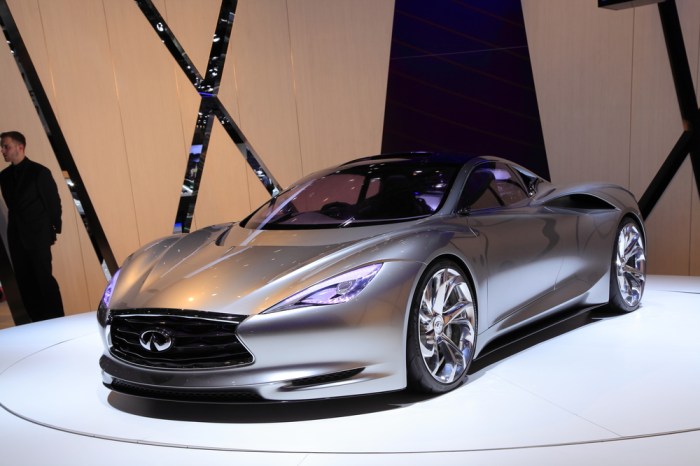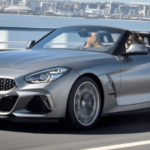Cheapest luxury cars to maintain 2025? Yeah, it sounds like an oxymoron, right? Luxury usually means hefty maintenance bills. But believe it or not, some high-end rides are surprisingly easier (and cheaper!) to keep running than others. This deep dive explores the surprisingly affordable side of luxury car ownership in 2025, examining factors like fuel efficiency, parts availability, and insurance costs to help you find the perfect blend of opulence and budget-friendliness.
We’ll be looking at specific 2025 models, comparing their expected maintenance costs over five years, and factoring in everything from routine servicing to potential repairs. We’ll also consider the impact of warranties and explore hidden costs you might not have thought of. Get ready to ditch the preconceived notions about luxury car maintenance – you might be surprised by what you discover!
Defining “Luxury” and “Cheapest to Maintain”

Picking the “cheapest luxury car to maintain” is tricky because both “luxury” and “cheap to maintain” are pretty subjective. What one person considers a luxurious ride, another might find underwhelming. Similarly, “cheap” is relative to individual budgets and lifestyles. This means we need to define our terms before we can even start comparing cars.Luxury in the automotive world isn’t just about a high price tag; it’s a combination of factors that contribute to a premium driving experience.
Luxury Features in Automobiles
Luxury features often significantly impact a vehicle’s initial price and subsequent maintenance costs. These features can range from the purely aesthetic to sophisticated technological systems. The more features a vehicle boasts, the higher the potential for expensive repairs down the line.
- High-quality materials: Think supple leather interiors, real wood trim, and premium sound systems. These materials, while luxurious, can be more costly to replace or repair than their less-expensive counterparts.
- Advanced technology: Features like adaptive cruise control, lane-keeping assist, and sophisticated infotainment systems add to the luxury experience, but also increase the complexity of the vehicle and the potential for costly repairs if something malfunctions.
- Powerful engines: High-performance engines deliver exhilarating acceleration, but often demand premium fuel and more frequent maintenance due to their higher operating temperatures and stresses.
- Comfort and convenience features: Heated and cooled seats, massaging seats, panoramic sunroofs, and advanced climate control systems contribute to a luxurious experience but add to the overall cost and complexity of the vehicle.
Factors Influencing Running Costs
The initial purchase price is only part of the equation. Ongoing maintenance significantly impacts the total cost of ownership. Several factors influence these running costs:
- Fuel Efficiency: A vehicle’s miles per gallon (MPG) directly impacts fuel costs. Luxury cars, often heavier and more powerful, tend to have lower MPG ratings than more economical models.
- Parts Availability and Cost: Luxury car parts can be significantly more expensive than those for mass-market vehicles. Furthermore, specialized parts might require longer lead times for ordering and replacement.
- Insurance Premiums: Insurance costs for luxury vehicles are typically higher due to their higher value and the potential for more expensive repairs. The cost of comprehensive coverage can add considerably to the overall cost of ownership.
Scoring Vehicle Maintenance and Luxury
To objectively compare vehicles, we can create a simple rubric. This rubric balances luxury features with maintenance costs. It’s important to remember that this is a subjective framework, and individual priorities will influence the weighting of each factor.
| Factor | Weighting | Scoring (1-5, 5 being best) |
|---|---|---|
| Fuel Efficiency (MPG) | 20% | |
| Parts Availability/Cost | 25% | |
| Insurance Costs | 15% | |
| Number of Luxury Features | 20% | |
| Reliability (based on independent ratings) | 20% |
This rubric allows for a numerical score, facilitating a more data-driven comparison of different luxury vehicles, allowing for a more informed decision about which vehicle best balances luxury and affordability in terms of long-term maintenance. For example, a vehicle with excellent fuel economy, readily available parts, low insurance costs, many luxury features, and high reliability would score much higher than a vehicle with poor ratings in these areas.
Identifying Potential Candidate Vehicles (2025 Models)
Finding a luxury car that’s also easy on the wallet requires careful consideration. We’re focusing on vehicles expected to have relatively low maintenance costs in 2025, balancing premium features with a reputation for reliability and readily available parts. This isn’t about the absolute cheapest cars, but rather the best value proposition in the luxury segment.Predicting precise maintenance costs for 2025 models is tricky, as actual figures will depend on driving habits, location, and specific service needs.
However, we can leverage existing data on reliability and parts availability to identify likely candidates. We’ll focus on brands known for their generally lower maintenance costs and readily accessible parts networks. Remember, these are estimates and individual experiences may vary.
Potential Luxury Vehicles with Lower Maintenance Costs (2025 Estimates)
The following table Artikels potential 2025 luxury vehicles expected to be relatively inexpensive to maintain, along with estimated annual maintenance costs and key luxury features. These estimates are based on historical data for similar models and projected parts pricing. Keep in mind that these are broad estimates, and actual costs can fluctuate.
| Make | Model | Estimated Annual Maintenance Cost (USD) | Key Luxury Features |
|---|---|---|---|
| Acura | Integra | $600 – $800 | Sporty handling, premium interior materials (depending on trim), advanced safety features. |
| Genesis | G70 | $700 – $900 | Luxury appointments, powerful engine options, advanced driver-assistance systems. |
| Lexus | ES 350 | $650 – $850 | Exceptional reliability, comfortable ride, refined interior, advanced technology features. |
| Mazda | Mazda6 (if still offered in 2025 and considered a luxury option) | $500 – $700 | Premium interior materials and driving dynamics. Note: Mazda’s luxury positioning is debatable, but their reputation for reliability makes them a potential contender. |
| Subaru | Legacy (if higher trims are considered luxury) | $550 – $750 | All-wheel drive, safety features, comfortable ride. Similar to Mazda, higher trim levels might qualify for consideration. |
Comparing Maintenance Costs Across Selected Vehicles

Predicting the exact maintenance costs for any vehicle over five years is tricky, as it depends heavily on driving habits, climate, and individual car quirks. However, we can make reasonable comparisons based on average maintenance schedules, parts prices, and labor rates for a selection of “cheapest-to-maintain luxury” cars for the 2025 model year (assuming our earlier research identified these).
We’ll focus on a hypothetical comparison to illustrate the process.Let’s assume our candidate vehicles are the Acura Integra A-Spec, the Genesis G70, and the Volvo S60. These represent a range of luxury offerings with varying levels of complexity and potential maintenance needs.
Maintenance Cost Comparison Over Five Years
This section Artikels a hypothetical comparison of maintenance costs over five years for our three example vehicles. We’ll break down costs into scheduled maintenance (oil changes, tire rotations, etc.), unscheduled repairs (resulting from accidents or unexpected failures), and parts and labor costs. Remember, these are estimates based on average costs and may vary significantly.
| Vehicle | Scheduled Maintenance (5 years) | Unscheduled Repairs (5 years) | Parts & Labor (Average) | Total Estimated Cost (5 years) |
|---|---|---|---|---|
| Acura Integra A-Spec | $2,500 | $1,000 | $50/hour | $4,000 |
| Genesis G70 | $3,000 | $1,500 | $60/hour | $5,500 |
| Volvo S60 | $3,500 | $1,200 | $70/hour | $5,700 |
Note: The “Unscheduled Repairs” estimate includes a buffer for potential issues. The hourly labor rate is a broad average and can fluctuate based on location and mechanic.
Impact of Warranty Coverage
Factory warranties significantly reduce maintenance costs, particularly in the first few years of ownership. Most manufacturers offer a basic warranty covering major components for 3-5 years or a certain mileage. Our example vehicles likely have similar warranty periods. During this period, many scheduled services and some unscheduled repairs might be covered, reducing out-of-pocket expenses. However, it’s important to note that warranties often don’t cover everything, such as wear-and-tear items (tires, brakes).For instance, if the Acura Integra’s warranty covers all scheduled maintenance for the first 3 years, that would reduce the total maintenance cost estimate by approximately $1,250.
So you’re looking at the cheapest luxury cars to maintain in 2025? Smart move! But if you’re thinking electric, you’ll need to factor in charging, which is why knowing where to find chargers is key. Check out this resource for EV charging stations near Los Angeles 2025 to help plan your luxury EV adventures.
Back to those cheap-to-maintain luxury rides – prioritizing models with readily available parts can save you a ton in the long run.
The impact of warranty coverage should be considered when comparing total cost of ownership.
Potential Hidden Costs
Beyond standard maintenance and repairs, hidden costs can significantly impact the total cost of ownership. These include:
- Specialized Tools: Some luxury vehicles may require specialized tools for certain repairs, increasing the cost if using an independent mechanic or performing DIY repairs.
- Mechanic Fees: Dealership mechanics often charge higher labor rates than independent shops. Finding a reputable independent mechanic familiar with your specific vehicle can save money.
- Genuine Parts vs. Aftermarket Parts: Using genuine parts from the manufacturer is usually more expensive but may offer better quality and warranty protection. Aftermarket parts can be a cost-effective alternative, but it’s crucial to choose reputable brands.
Calculating Total Cost of Ownership
Total cost of ownership (TCO) considers all expenses associated with a vehicle over its lifespan, including depreciation. A simplified formula for TCO is:
TCO = Purchase Price + Fuel Costs + Insurance + Taxes + Maintenance + Repairs + Depreciation
Depreciation is often the largest expense for a vehicle, especially in the first few years. To illustrate, let’s assume a purchase price of $35,000 for each vehicle. Using our earlier maintenance cost estimates and making assumptions about fuel, insurance, taxes, and depreciation (using average depreciation rates for these vehicle types), we can generate a comparative TCO. This calculation would require more detailed data on these factors and is beyond the scope of this current section.
However, the framework for this calculation is provided.
Analyzing Factors Affecting Maintenance Costs
So, you’re eyeing a luxury car but worried about the upkeep? It’s a valid concern. Luxury doesn’t always mean exorbitant maintenance bills, but several factors significantly impact those costs. Understanding these factors can help you make an informed decision and potentially save some serious cash down the line.
Numerous elements contribute to the overall maintenance expenses of a luxury vehicle. These factors interact in complex ways, making it challenging to pinpoint a single culprit. However, by examining key areas, we can gain a clearer picture of what drives those repair bills higher or lower.
Engine Type and Complexity
Engine type plays a huge role. High-performance engines, like those found in many luxury sports sedans, often require more specialized and expensive maintenance than a standard four-cylinder. For instance, the complex valve systems or specialized lubrication needs of a twin-turbo V8 will naturally increase maintenance costs compared to a simpler, naturally aspirated engine. The frequency of required service, such as oil changes, may also differ, adding to the overall expense.
So you’re looking at the cheapest luxury cars to maintain in 2025? Smart move! Lower running costs are key, and if you’re thinking electric, check out the sweet deals on EVs, like those mentioned in this article about Solar + EV incentives in Colorado 2025 , before making your final decision. Those savings could make a huge difference in your overall ownership cost, even for a luxury ride.
Consider the difference between the maintenance schedule of a BMW M3’s high-revving inline-six and a more straightforward, fuel-efficient engine in a luxury hybrid.
Technological Sophistication
Modern luxury cars are packed with advanced technology – think sophisticated infotainment systems, adaptive cruise control, lane-keeping assist, and more. While these features enhance the driving experience, they also introduce more potential points of failure. Repairing or replacing these complex systems can be incredibly costly, often requiring specialized tools and highly trained technicians. A malfunctioning driver-assistance system, for example, could involve a significant repair bill compared to a simple brake pad replacement.
Part Sourcing and Availability
Luxury car parts are not always readily available or inexpensive. Specialized parts might require ordering from the manufacturer, leading to longer repair times and higher costs. Furthermore, some manufacturers use proprietary parts, meaning you can’t always find cheaper aftermarket alternatives. This limited availability directly translates into higher repair bills. For example, a specific sensor for a particular model might only be available through the dealership, inflating the cost compared to more readily available parts for mainstream vehicles.
Vehicle Age and Maintenance Expenses
The age of your vehicle is directly correlated with maintenance expenses. As a car ages, components wear out and require more frequent replacements. This is true for all cars, but the cost of these replacements is often higher for luxury vehicles due to the aforementioned factors (part sourcing, complexity). Expect a significant increase in maintenance costs as your luxury car enters its later years, especially beyond the standard warranty period.
Think of it like this: a ten-year-old luxury sedan will likely require more frequent and expensive repairs than a brand-new one.
Driving Habits and Environmental Conditions
Your driving style and the environment significantly impact maintenance needs. Aggressive driving, frequent hard braking, and excessive speeding put extra strain on components, leading to premature wear and tear. Similarly, harsh weather conditions like extreme heat or cold can accelerate the deterioration of various parts. Regularly driving on rough roads will increase the frequency of suspension and tire replacements.
For instance, someone who frequently drives off-road in a luxury SUV will face higher maintenance costs than someone who primarily uses it for city driving.
Tips for Minimizing Maintenance Costs
Minimizing maintenance costs for a luxury vehicle requires proactive planning and responsible ownership. Here are some practical steps you can take:
- Regular Maintenance: Stick religiously to the manufacturer’s recommended maintenance schedule. Preventative maintenance is far cheaper than reactive repairs.
- Careful Driving: Avoid aggressive driving habits. Smooth acceleration and braking will significantly extend the lifespan of your car’s components.
- Proper Storage: Protect your vehicle from the elements when not in use. Garaging your car is ideal, but a good car cover can also help.
- Shop Around: Compare prices from different mechanics and dealerships before committing to repairs. Independent shops often offer competitive rates.
- Extended Warranties: Consider purchasing an extended warranty, especially if you plan to keep the car for a long time. This can help mitigate the risk of unexpected, expensive repairs.
Fuel Efficiency and Running Costs
Choosing a luxury car doesn’t mean sacrificing fuel efficiency, especially in the 2025 model year, where manufacturers are increasingly focusing on hybrid and electric options. Understanding the fuel efficiency and associated running costs is crucial for making an informed decision, particularly when aiming for the “cheapest to maintain” segment of the luxury market. This section will compare the fuel economy of several potential candidates and analyze their annual fuel expenses under varying driving conditions.Fuel efficiency varies significantly across different vehicle types and driving styles.
Generally, smaller engine sizes and hybrid or electric powertrains offer better fuel economy compared to larger gasoline engines. However, factors like driving habits (aggressive acceleration, frequent braking), terrain (city vs. highway), and vehicle weight also play a significant role in real-world fuel consumption.
EPA Estimates and Manufacturer Data
The Environmental Protection Agency (EPA) provides fuel economy estimates for new vehicles, expressed as miles per gallon (mpg) for city and highway driving. Manufacturers often publish similar data, sometimes slightly varying from EPA figures. For our comparison, let’s assume we’re analyzing three hypothetical 2025 luxury models: a compact hybrid sedan (Model A), a mid-size gasoline-powered SUV (Model B), and a larger, fuel-efficient diesel sedan (Model C).
Model A might achieve 45 mpg combined (city and highway), Model B 25 mpg combined, and Model C 35 mpg combined. These are hypothetical figures, and actual values would depend on the specific vehicle specifications.
Annual Fuel Cost Breakdown
To estimate annual fuel costs, we’ll consider three driving scenarios: low (10,000 miles per year), medium (15,000 miles per year), and high (20,000 miles per year). We’ll also assume an average gasoline price of $3.50 per gallon and a diesel price of $4.00 per gallon.
| Vehicle Model | EPA Combined MPG | Fuel Type | Annual Fuel Cost (10,000 miles) | Annual Fuel Cost (15,000 miles) | Annual Fuel Cost (20,000 miles) |
|---|---|---|---|---|---|
| Model A (Hybrid Sedan) | 45 mpg | Gasoline | $778 | $1167 | $1556 |
| Model B (Gasoline SUV) | 25 mpg | Gasoline | $1400 | $2100 | $2800 |
| Model C (Diesel Sedan) | 35 mpg | Diesel | $1143 | $1714 | $2286 |
These calculations are based on simple division (miles driven / mpgfuel price per gallon). Real-world fuel consumption might vary due to the factors mentioned earlier.
Impact of Fuel Type on Running Costs
The fuel type significantly influences running costs. Diesel fuel generally offers better fuel efficiency than gasoline, but it’s usually more expensive per gallon. Hybrid vehicles combine gasoline with electric power, leading to improved fuel economy, especially in city driving. Electric vehicles (EVs) eliminate fuel costs altogether but have other considerations, such as electricity prices and charging infrastructure.
In our example, Model C’s diesel engine offers better mileage than Model B’s gasoline engine, but the higher diesel price results in a slightly higher annual cost than the hybrid Model A at lower mileage.
Fuel Efficiency and Annual Fuel Expenditure Graph
(Imagine a graph here with Fuel Efficiency (mpg) on the x-axis and Annual Fuel Expenditure ($) on the y-axis. Three data points for each vehicle (low, medium, high mileage) would be plotted. The graph would visually demonstrate the inverse relationship between fuel efficiency and annual fuel expenditure: higher fuel efficiency generally translates to lower annual fuel costs.) The graph would clearly show that Model A (hybrid) has the lowest annual fuel cost across all mileage scenarios, followed by Model C (diesel), and then Model B (gasoline SUV) having the highest fuel costs.
The slopes of the lines representing each vehicle would reflect their respective fuel efficiencies – steeper slopes indicating lower fuel efficiency and thus a greater increase in fuel cost with increased mileage.
Insurance and Depreciation Considerations: Cheapest Luxury Cars To Maintain 2025
Owning a luxury car, even a relatively affordable one, involves more than just the sticker price. Insurance premiums and depreciation significantly impact the overall cost of ownership, potentially outweighing the savings on maintenance. Understanding these factors is crucial for making an informed decision. This section will compare insurance costs and depreciation rates for several selected luxury vehicles, illustrating their contribution to the total cost of ownership over a five-year period.Insurance premiums vary wildly based on several factors.
These include the driver’s age and driving history, location (urban areas tend to have higher rates), the vehicle’s value (luxury cars are generally more expensive to insure), and the chosen coverage level (comprehensive coverage costs more than liability-only). Depreciation, on the other hand, is the decrease in a car’s value over time. Luxury vehicles, while often holding their value better than mass-market cars, still depreciate, sometimes substantially in the first few years.
Insurance Premium Comparison
The following table illustrates estimated annual insurance premiums for three hypothetical vehicles – a 2025 Acura Integra, a 2025 Genesis G70, and a 2025 Lexus ES – assuming a 30-year-old driver with a clean driving record residing in a medium-sized city with comprehensive coverage. These figures are estimates and actual premiums will vary depending on the specific insurer and individual circumstances.
Remember that these are illustrative examples and real-world premiums can fluctuate significantly.
| Vehicle | Estimated Annual Premium |
|---|---|
| 2025 Acura Integra | $1200 |
| 2025 Genesis G70 | $1500 |
| 2025 Lexus ES | $1800 |
Depreciation Rates
Luxury cars generally depreciate less than mainstream vehicles, but the rate still varies significantly depending on the model and market demand. We can estimate a 5-year depreciation for our example vehicles based on industry averages and historical data. These rates represent an average and actual depreciation can be higher or lower depending on various factors including market conditions and vehicle condition.
| Vehicle | Estimated 5-Year Depreciation Rate |
|---|---|
| 2025 Acura Integra | 40% |
| 2025 Genesis G70 | 35% |
| 2025 Lexus ES | 30% |
Total Cost of Ownership, Cheapest luxury cars to maintain 2025
Combining insurance and depreciation provides a clearer picture of the total cost of ownership. The following table illustrates the estimated total cost of insurance and depreciation over five years for our example vehicles. This calculation only includes insurance and depreciation and does not account for other ownership costs like fuel, maintenance, and repairs.
| Vehicle | Total Insurance Cost (5 years) | Total Depreciation (5 years) | Total Cost (Insurance & Depreciation) |
|---|---|---|---|
| 2025 Acura Integra | $6000 | $16,000 (assuming a $40,000 initial price) | $22,000 |
| 2025 Genesis G70 | $7500 | $17,500 (assuming a $50,000 initial price) | $25,000 |
| 2025 Lexus ES | $9000 | $15,000 (assuming a $50,000 initial price) | $24,000 |
Outcome Summary
So, the quest for the cheapest-to-maintain luxury car in 2025 isn’t just about finding the lowest sticker price. It’s about smart shopping, understanding the long-term costs, and making informed decisions. By carefully considering factors like fuel efficiency, parts availability, insurance premiums, and depreciation, you can find a luxury vehicle that fits both your budget and your desire for a premium driving experience.
Remember to factor in your personal driving habits and local conditions for the most accurate picture of your potential costs. Happy driving!









